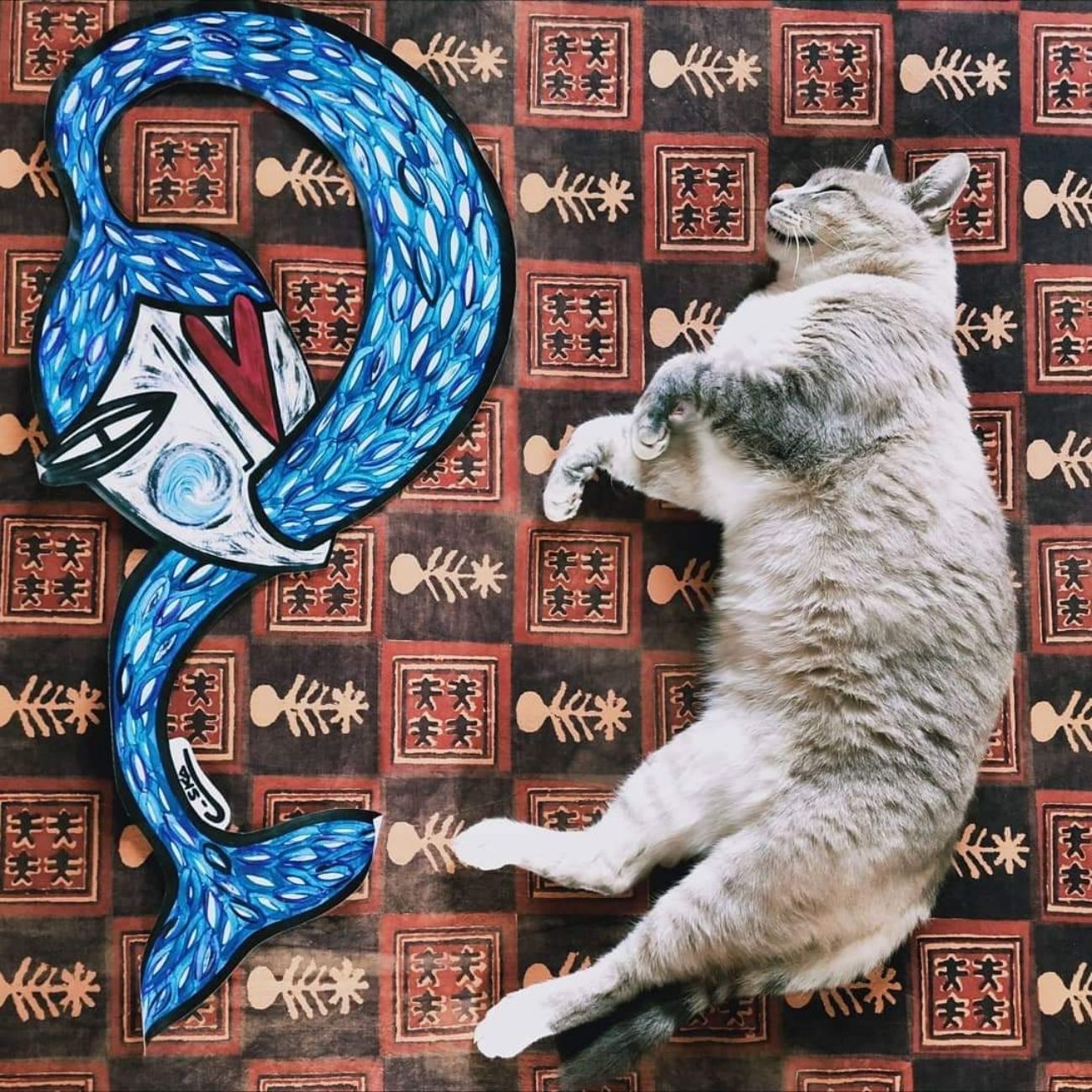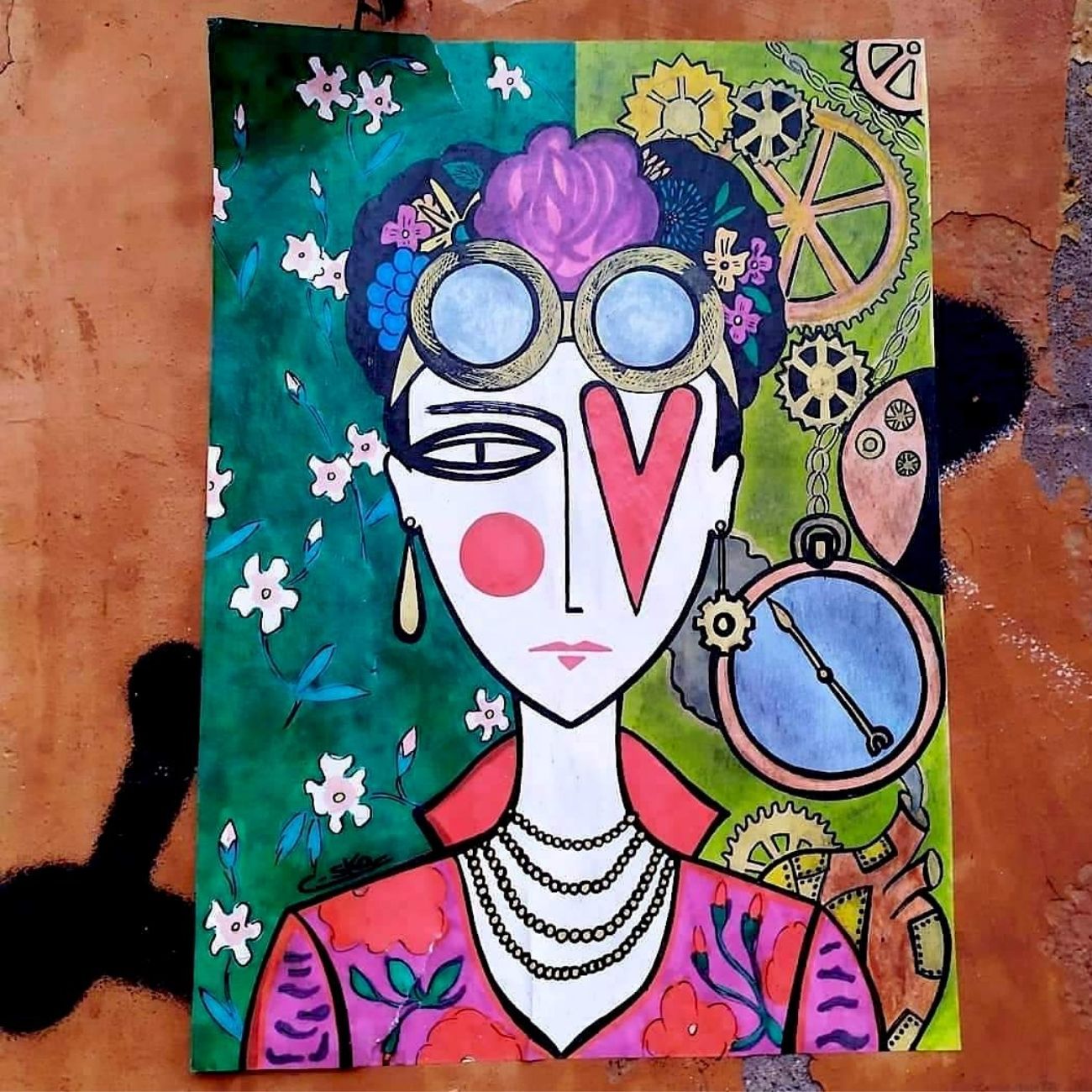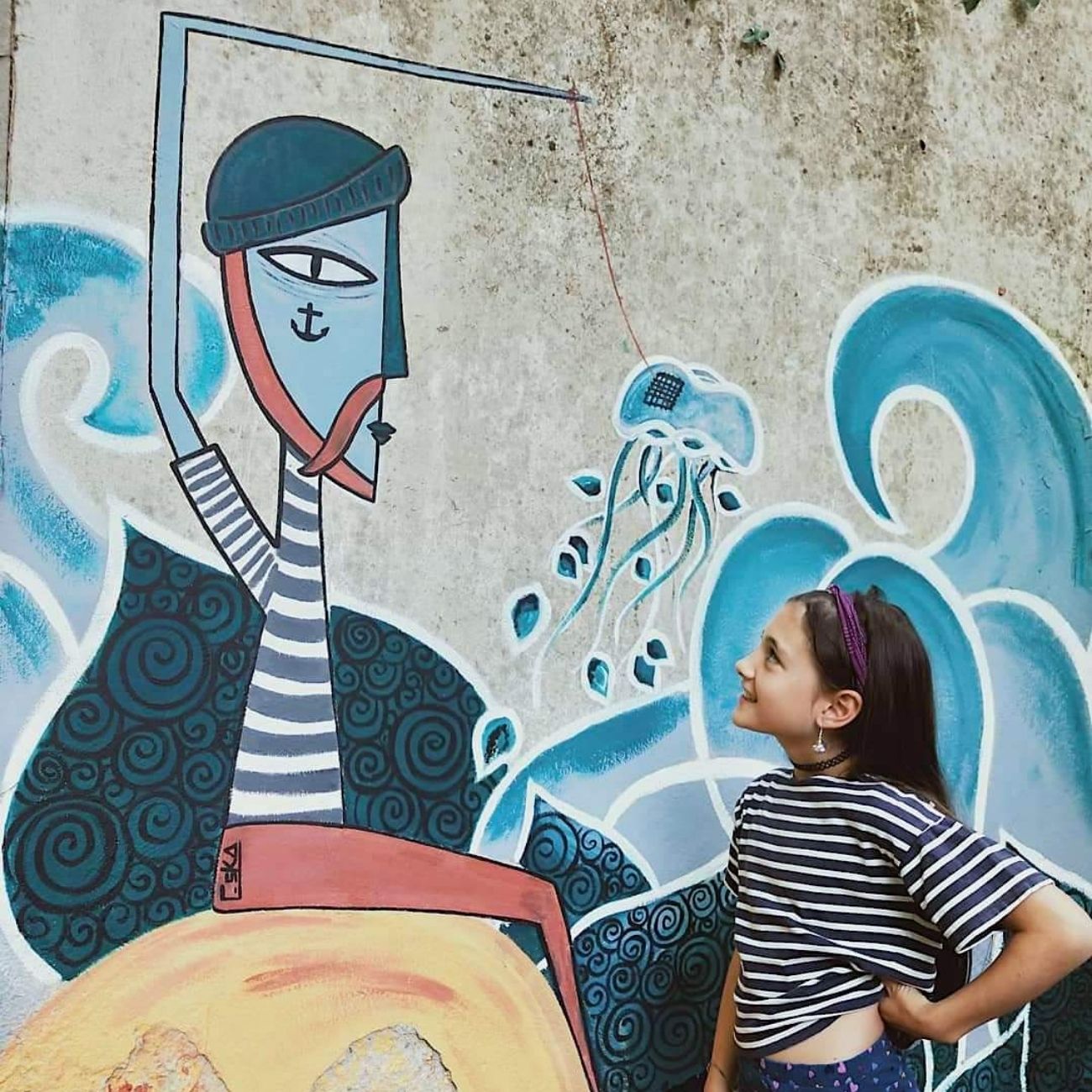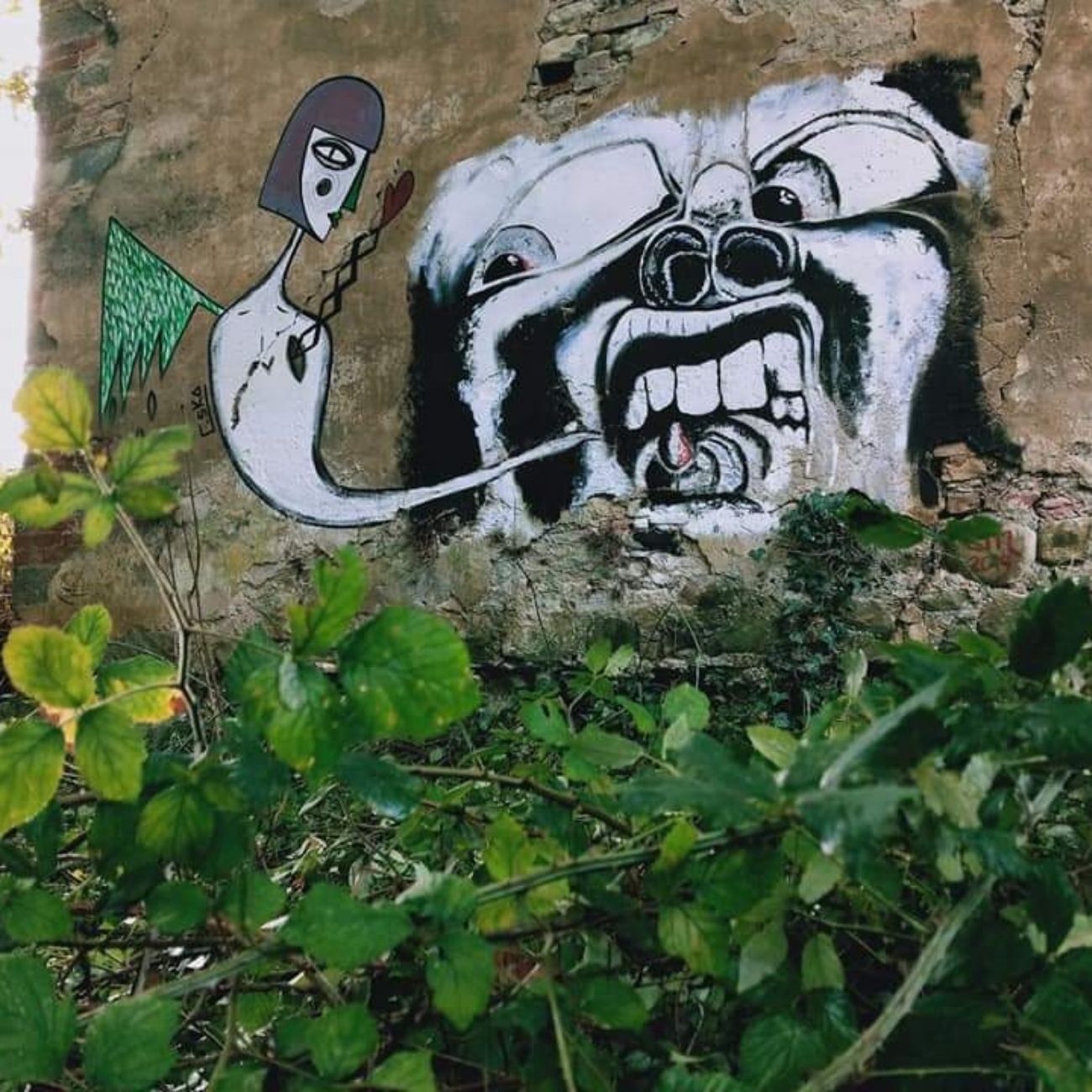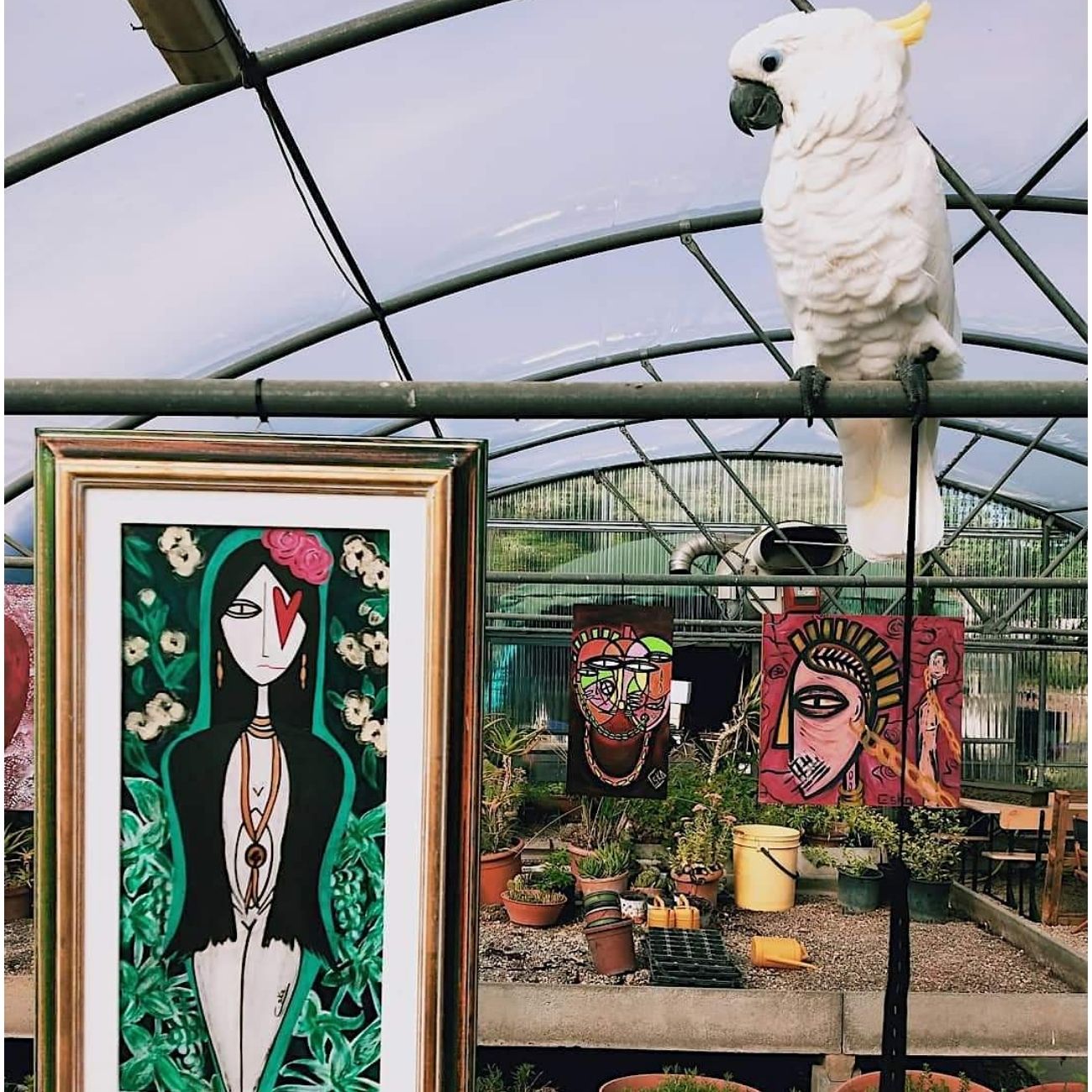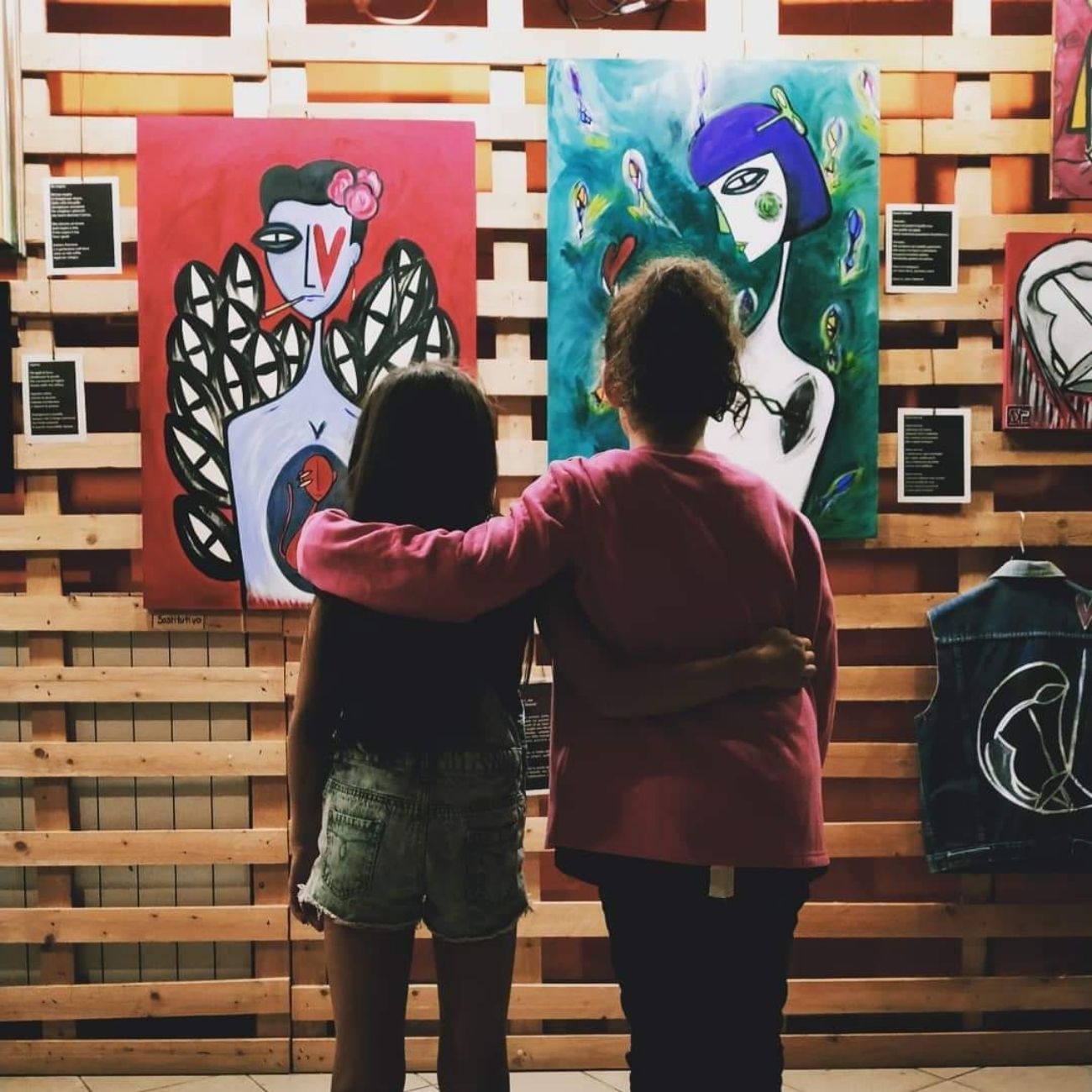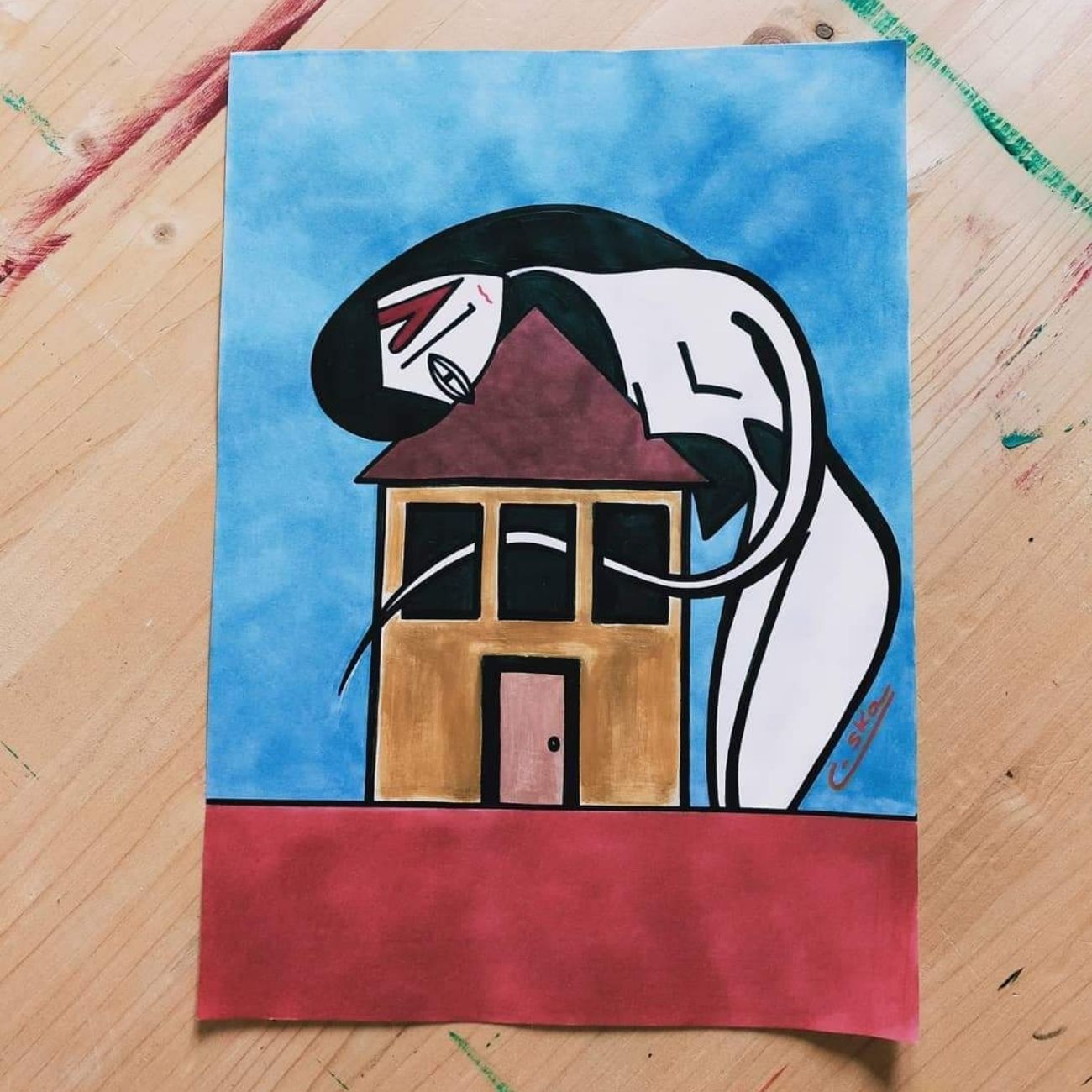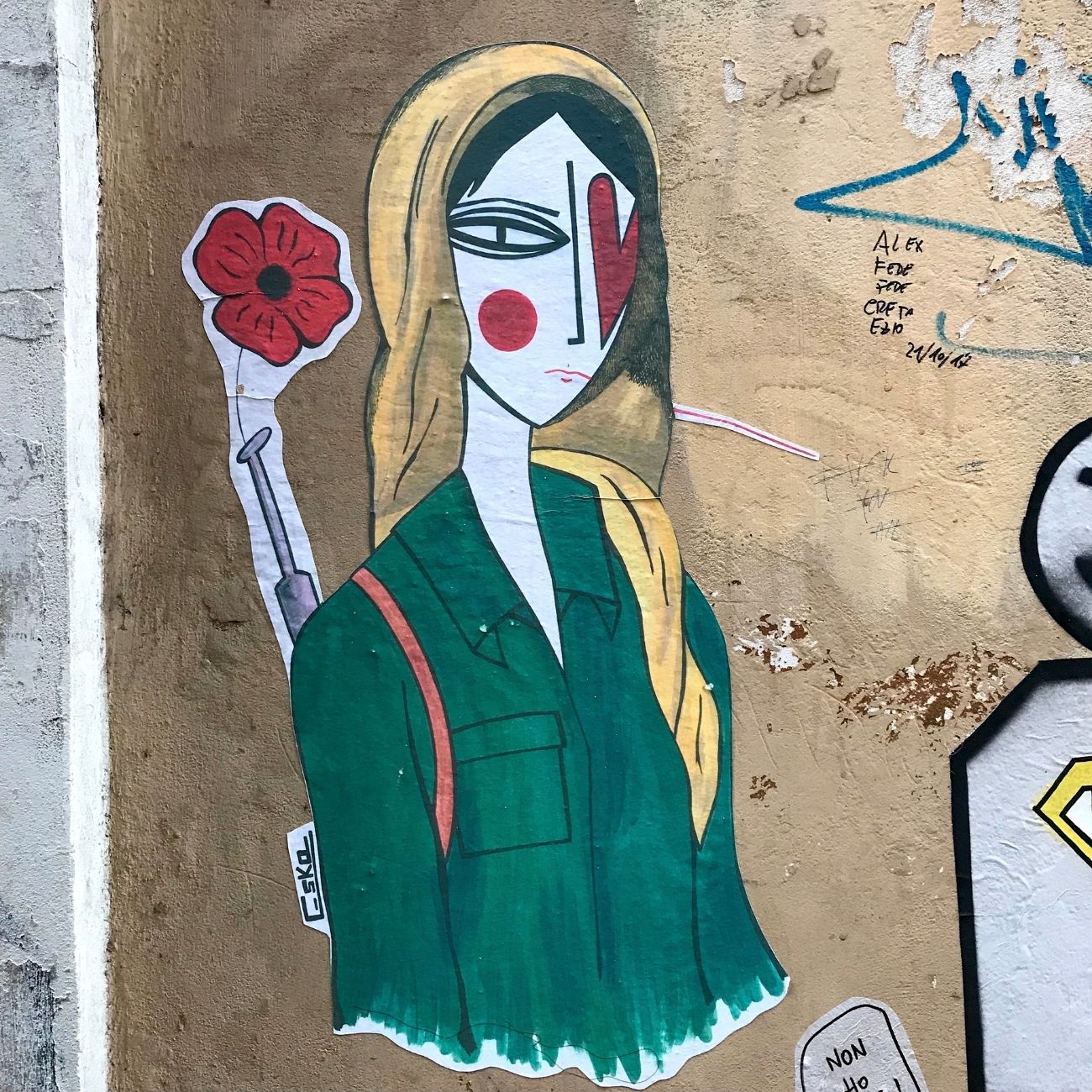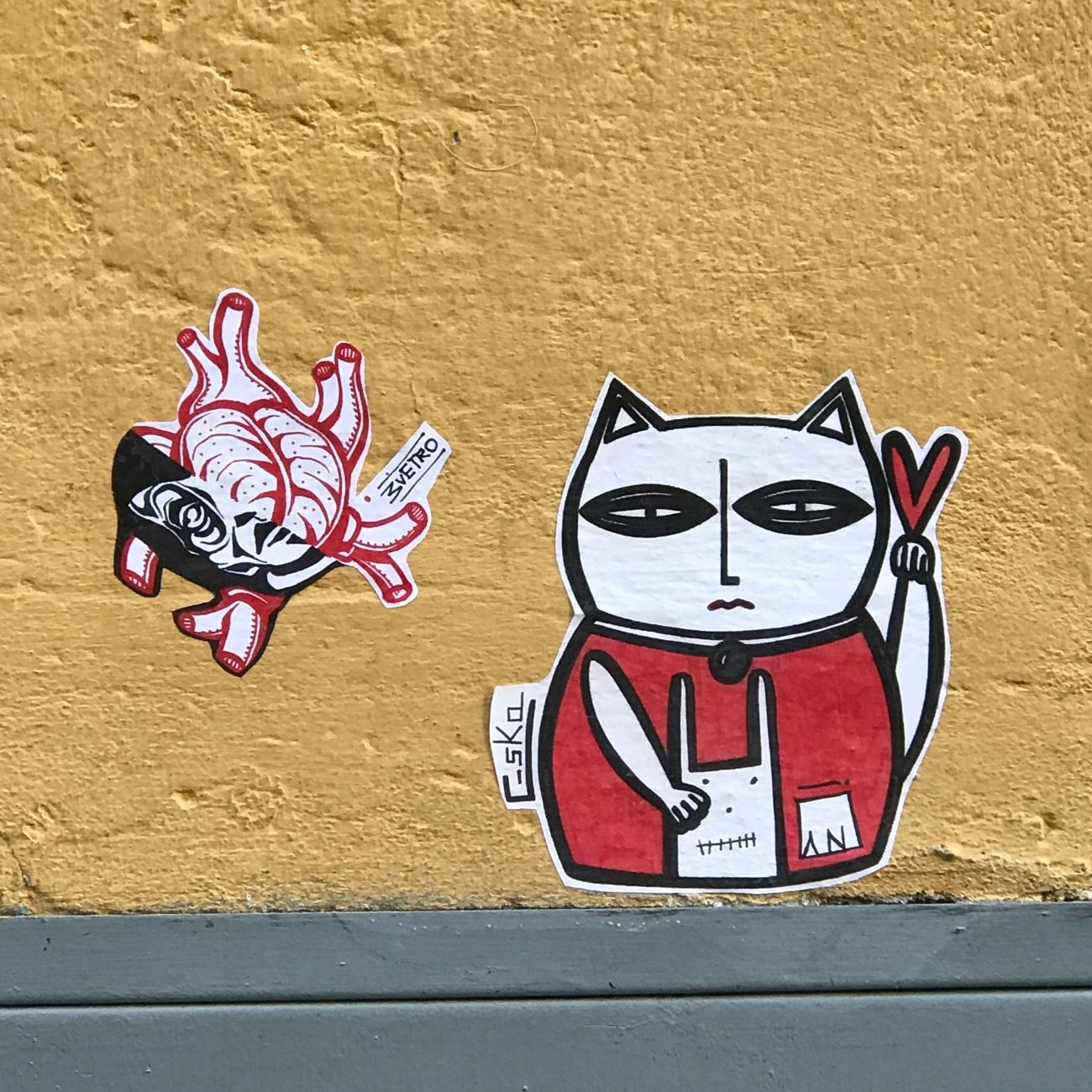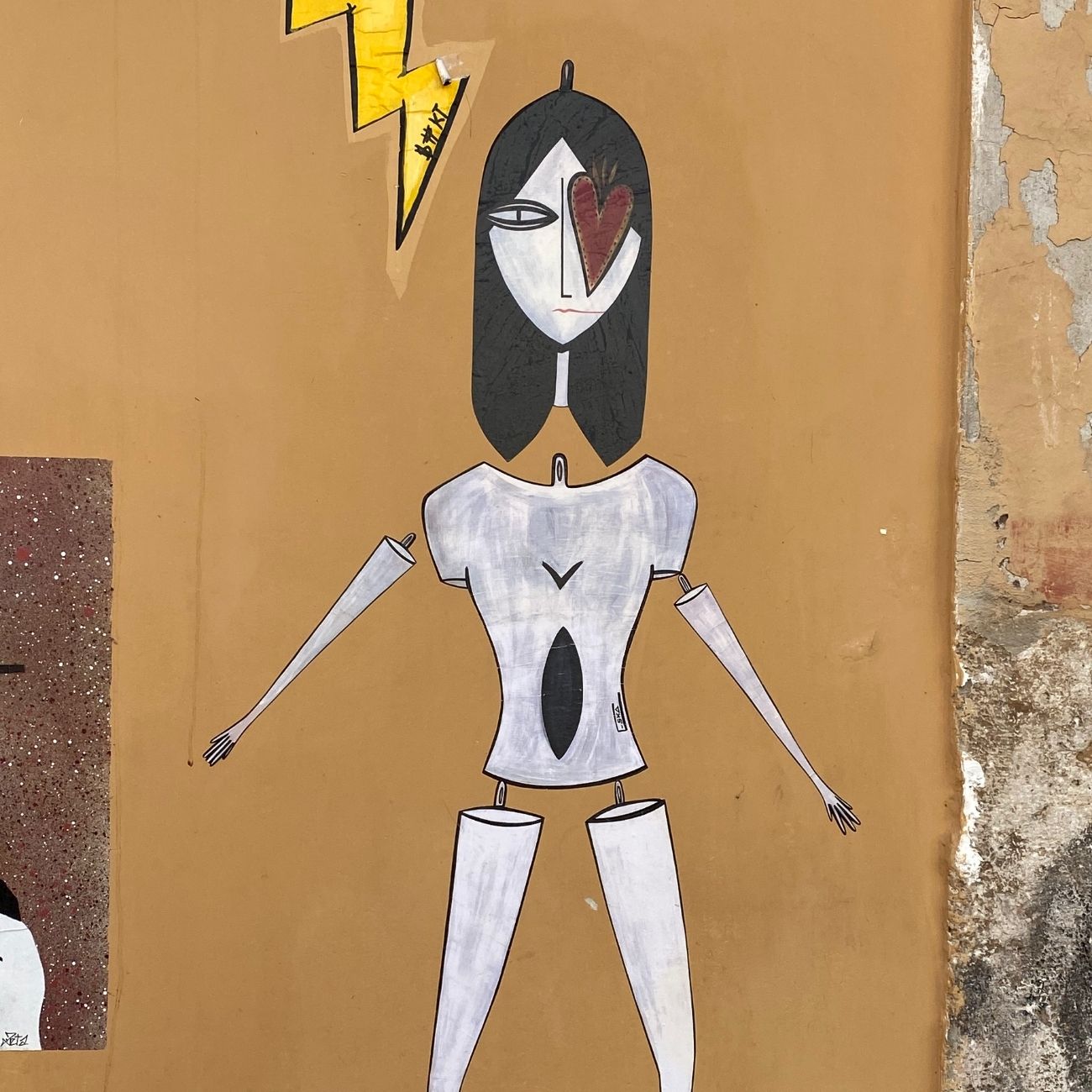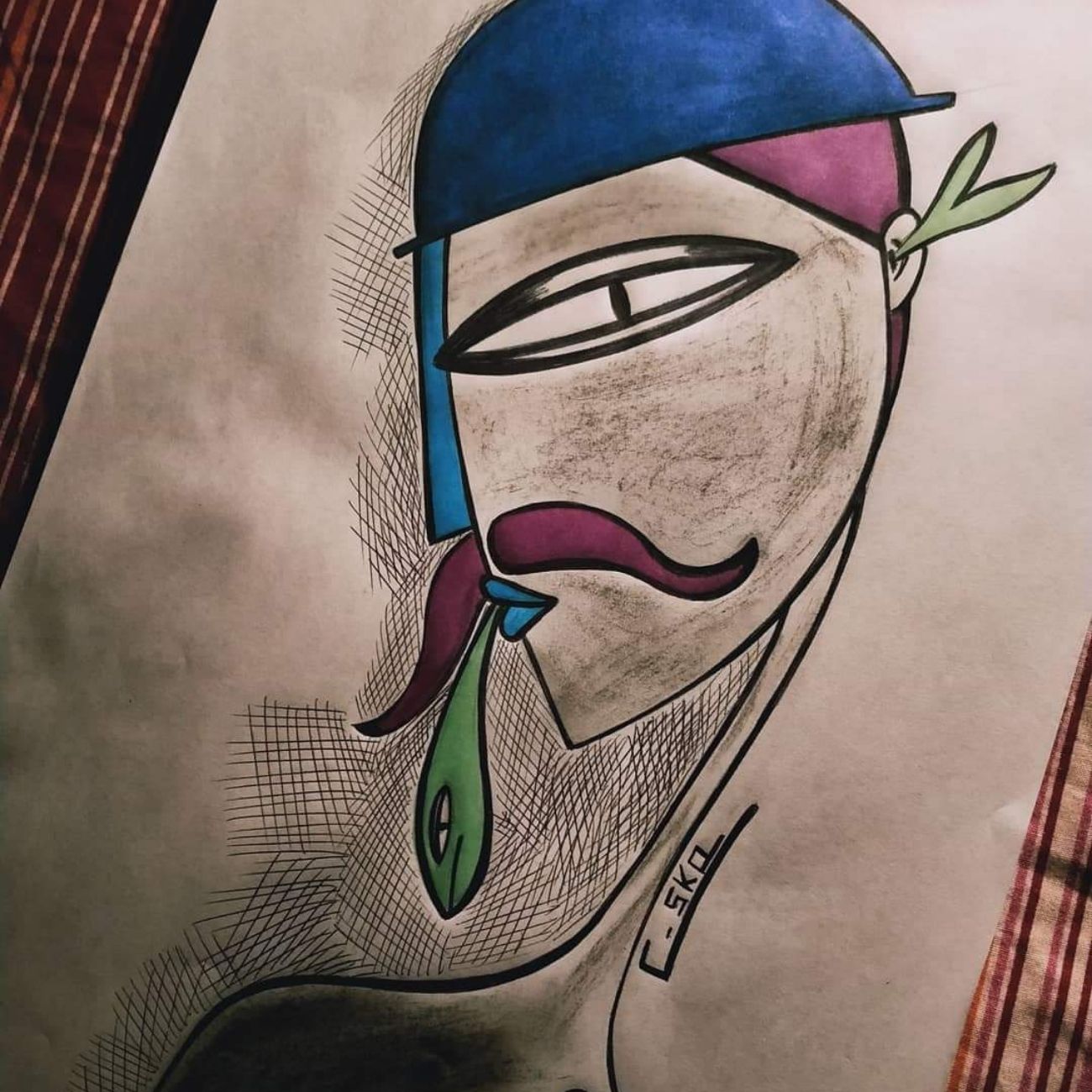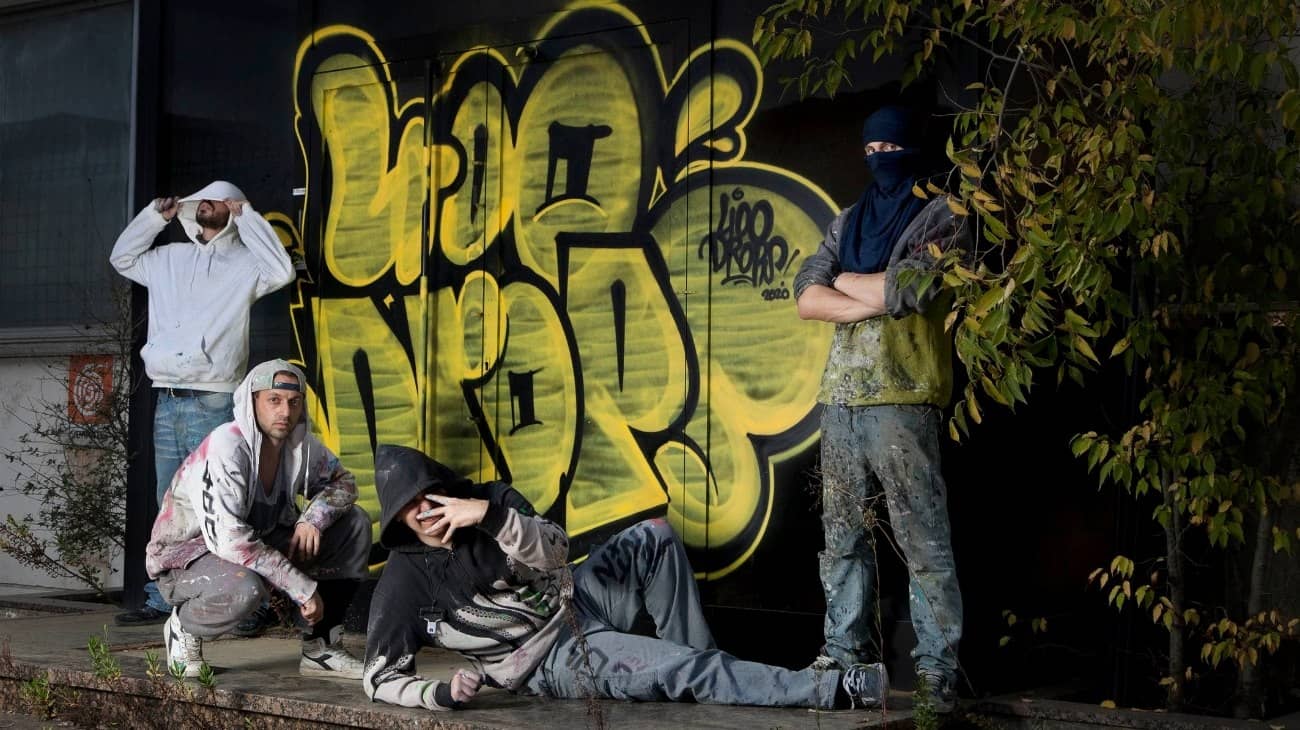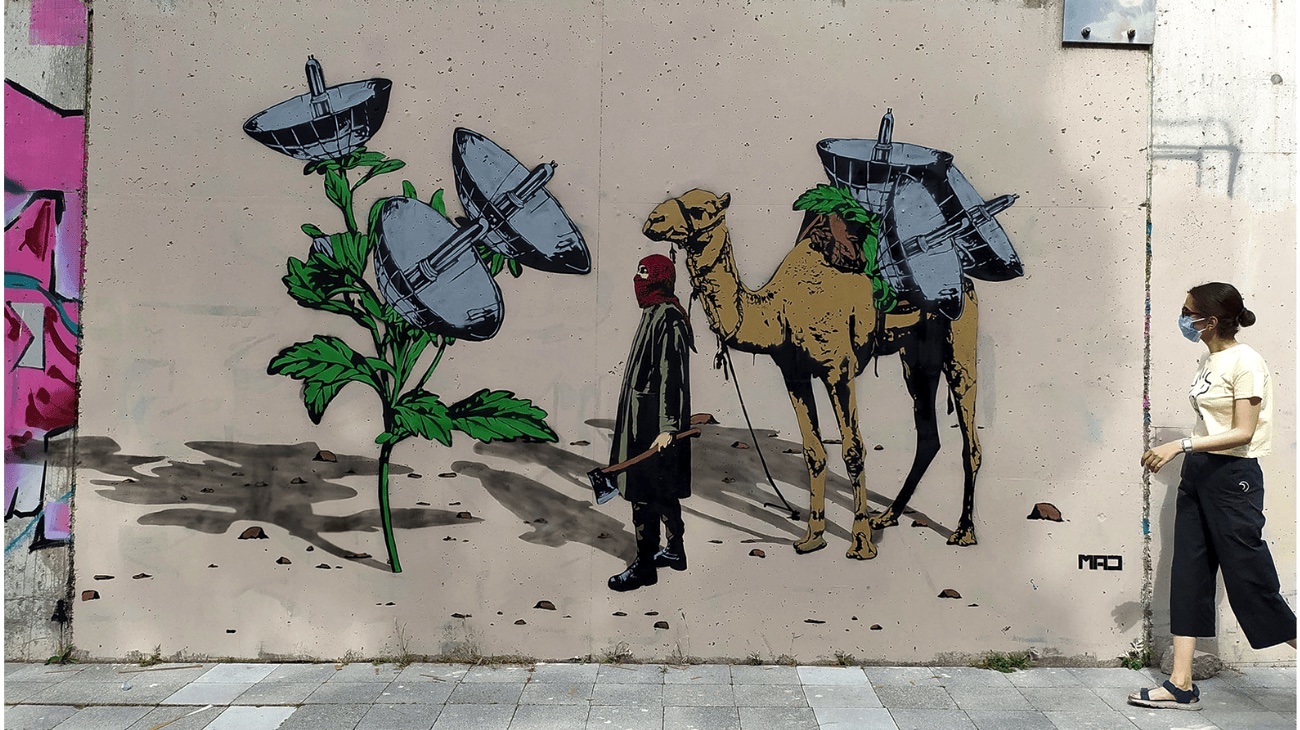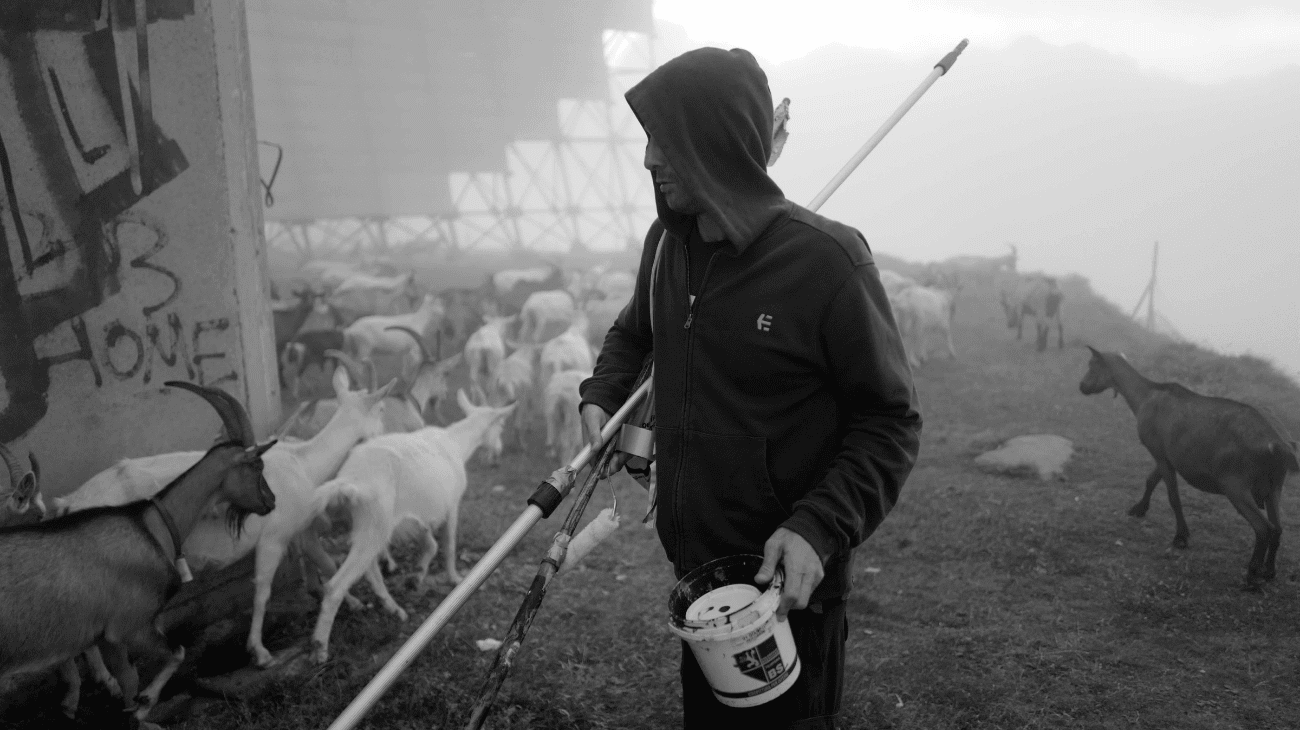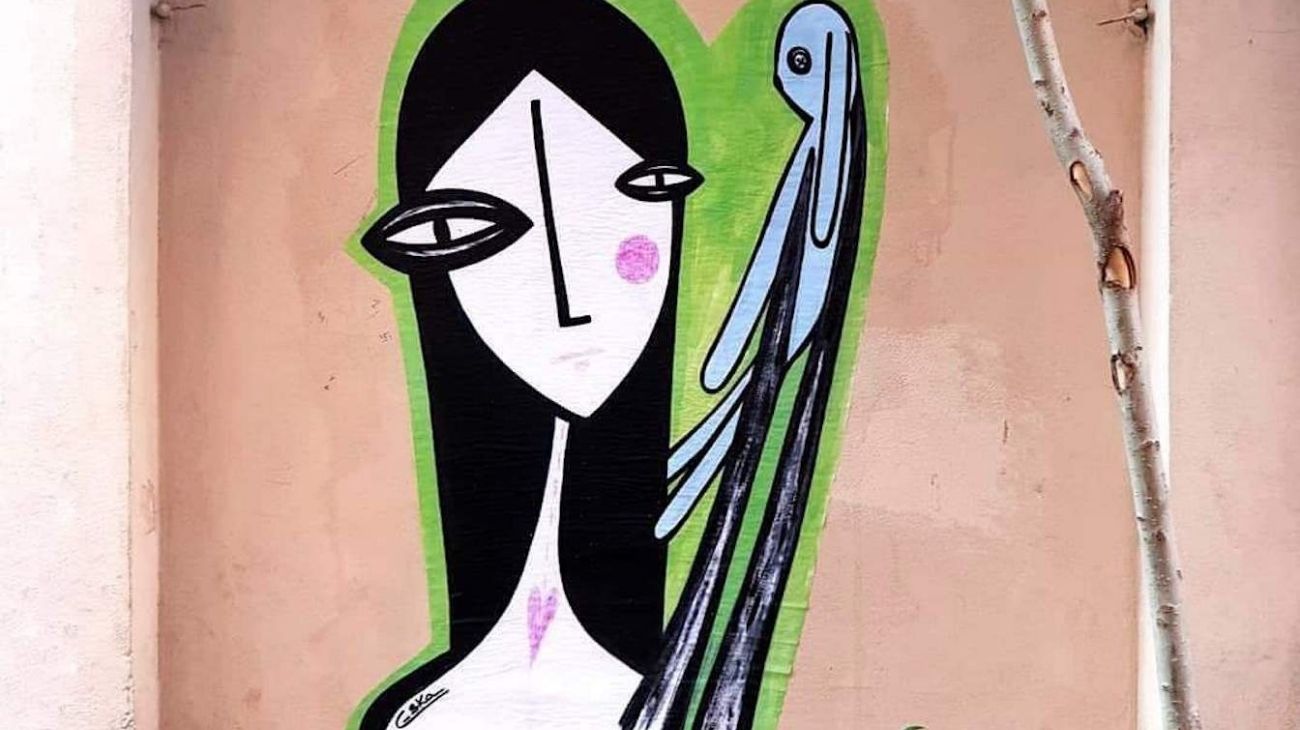
C_SKA ART
I was not born an artist, and maybe I’m not even an artist. I am a person who is curious about the world, about people, places and how ideas can enter into a circle and loop together.
What does street art mean to you?
For me, street art is a powerful means of communicating and talking to people. Where the spoken or written word does not arrive, the image arrives: immediate, synthetic, like a flash. Urban art can reach a very wide and heterogeneous public, and it is therefore the artist’s task to use this medium with their head. Not only to convey their own interiority but also to convey messages, to decide the agenda setting of the issues to focus on and to influence public opinion. I have learned this over time and, although I believe that everyone is free to express what they think is right to express, I feel that we have such a powerful medium in our hands and I think it is right to use it to promote a thought in favour of a cause or to make people reflect on an issue.
I am excited by the instinct from which it is born, the energy that releases the act of giving back to others, the sharing with other minds and thoughts and the beauty it generates.
What about you and your artistic background?
I was not born an artist, and maybe I’m not even an artist. I am a person who is curious about the world, about people, places and how ideas can enter into a circle and loop together. As a child, I used to draw a lot, then I loved numbers and combinations. In my adolescence, I started writing poetry, and then I took the path of journalism. Three and a half years ago, in a not so good period of my life, I felt the need to get back to the image. The drawing spoke to my inner self, but at the same time it could speak to others.
I used to photograph the street and abandoned places that have always attracted me magnetically since I was a child. I didn’t choose the street, we chose each other. It is the place where everything happens, where relationships between the most disparate individuals are triggered. One of the few places that remain true, where I really feel myself and alive!
What stands behind your artist name C_SKA?
A New Year’s Eve evening and a photo taken with a Polaroid where I was pointing a stick at the lens as a joke. The next morning, I wrote ‘skà’ with a marker underneath. Firstly, because it’s a short version of Francesca, also because I had a lot of fun with ska music during high school and because I like the onomatopoeic sound it creates… ‘SKA’… Try saying it yourself… SKAAAAAA… and that’s how C_ska was born.
You have a personal and memorable style with a high recognition value. How did you develop your style and technique? What are your sources of inspiration?
I express myself through illustration and the technique of paste-up or poster art. This is a technique that combines working in the studio or at home with acrylic paint or markers with, in my case, pasting on the street in more or less legal places (which generates that thrill and allows you to communicate with other styles in one big message). I have also experimented with the wall surface and I like its roughness. I also like the way it absorbs the colour and how it takes away thoughts and insecurities. When I was a child, I loved Van Gogh and Picasso, and I think that something of the latter can be seen in some of my work, the metaphysics of Dali, the surrealism of Frida Kahlo, who captivated me even more when I was grown up.
I like to imagine absurd situations and worlds with symbolic elements that speak of my interiority but also of society. At the beginning, the drawings showed themselves as visions that I had to bring back on paper; now this frenzy has subsided, but it was nice even if it was exhausting to live for a while in a parallel universe.
In recent years, I have been fascinated by Frida, a woman who has also infected me artistically. I went to her house in Mexico, I saw her exhibitions, but only after reading her biography did I realise how much she was really like me, as a woman, with her fragility and strength at the same time, with her hunger for beauty, with her dualism where one side fed the other.
You use many recurring symbols in your work such as the heart-eyed girl. Can you explain what stands behind these symbols?
My SKAwoman was born as an alter ego through which I could reveal my thoughts, my feelings and my inner self. The heart placed on her left eye is an invitation to filter the world with love. But it also tells stories of struggle, resistance, resilience and interiority towards the impasses of the world. Recently, I had the strong need to focus my art on the situation of defenceless people and their violated rights. This has resulted in more recent designs that lose a little of their introspection and imagination in order to focus on the stories of incredible people and the causes of their fates, which must not remain invisible.
How much time do you spend on an illustration? Is your art an emotional process?
My illustrations are born in a flash, a vision, a feeling that runs through the heart like a thrill, the need to see all of this manifested. And when I’m at work, or I don’t have the chance to express it, it’s really frustrating. I have to sedate it gently, almost like a child who has to fall asleep with a lullaby. As I have so many activities to do, I find it increasingly difficult to devote time to my own moments, and I am sorry about this. For me, the real challenge is painting. I have not done technical studies, but painting is something that transforms me and gives me a feeling of freedom I have never experienced before. It triggers that mix of excitement and the fear of making mistakes, and in the end, the instinct always wins. In front of a wall I did not plan, the fear is pushed aside and the challenge with myself is born. But the feeling is always pure adrenaline.
What kind of reaction do you expect to receive from viewers of your art?
I want it to trigger empathy and harmony in people’s minds. The people who contact me always have a story to tell me, and often my drawings are a link between them and me. It is nice to see my art as a vehicle for beauty and listening.
Do you notice regional differences depending on the city you are working in?
Each country and city has its own approach to street art, its positive and negative sides. I would make a mix between the openness in terms of Roman possibilities, the delicacy and taste of Florence, the veracity of southern countries and the more studied and perhaps more professional creativity of some northern cities.
You draw mainly female figures. Would you describe your art as feminist art?
Certainly, my work wants to send the message that female sensibility and the energy that comes out of it must be seen as potential, as an enrichment, both in everyday life and in art. As generators of life and beauty, we can in fact give a complete point of view on the world. As women, we also have a much more intimate approach to art, and I think this side can be seen in my work as well as in the work of other female artist friends.
Women are still underrepresented in the general art market. In your experience, does this also apply to the street art scene?
Unfortunately, in the urban art scene, the feminine side still hasn’t conquered the place it deserves yet. Perhaps this is due to the difficulty of doing an ‘apprenticeship’ on the street, as it is certainly more difficult for women to go alone in certain semi-abandoned areas and practise and improve their art. Or perhaps because, as in all contexts, we have to endure twice as much effort to reach high levels. But there are many female artists who have succeeded with great results, such as Gio Pistone and Camilla Falsini, Alessandra Carloni and many others, who are a source of inspiration and strength for me.
Street art enters the traditional art market and people talk about the ‘Banksy effect’. In your opinion, is the traditional art market combinable with the essence of urban art?
As mentioned above, street art is the most powerful form of expression and communication that exists. It is born free and reaches everyone without distinction and above all without filters. You cannot help but see it and it leads you to reflect and pause for a moment to interpret the message it carries. It is therefore the task of the artists to use it to convey their interiority and moods, but also to encourage those who will see it to reflect more widely on the world and society. To do this it is essential to open a dialogue with local institutions in order to spread the beauty and messages of art even more widely. I do not see any loss of truthfulness and instinct in the realisation of events and festivals related to urban art in agreement with the institutions or the use of institutional spaces for the realisation of murals.
To do this, we need a great communicative work upstream, so that street art does not become a stratagem by the institutions to advertise themselves or to colour degraded areas of their territory. It is important to make the institutions really fall in love with this form of art, also in terms of respecting the expressions of the individual artists involved. In the same way, with the same precautions, urban art can also end up in the traditional art market circuit (even street artists are often full-time artists and make a living from their art) as long as they do not compromise too much and lose the instinct and freedom that characterises this art form. It will be up to the heart of the artist to set these limits.
What do you think about the discourse of urban art vs. vandalism?
Every form of expression is noteworthy, from small posters over large murals to writing, and public spaces belong to everyone, and everyone has the right to try it. Of course, it is essential to find a dialogue with the place where you decide to intervene, with the other forms of expression and with the history of that place. At the beginning, we are all a little bit caught up in the urge to ‘leave our mark’. Then you nurture a different, less compulsive and more focused approach and try to open new paths.
On the other hand, the institutions would need more recognition and knowledge of this form of expression, which always leaves beauty where it passes, breaks the grey of the city and launches messages that merge with each other. There is no vandalism but only a need for expression that perhaps does not find its own recognition sometimes through the more traditional channels. It is the demand to turn one’s gaze and the request to be heard. We should try to find a way to make every form of expression become beauty, perhaps by giving more space to this art form, helping it to blossom.
How will C_SKA move on? Is there any advice you would give to young street artists who are at the beginning of their career?
For work reasons, I will be forced to find a new way to practise my art, but I have the confidence that it will always be part of me. In the end, C_ska is a little piece of me and I can’t help but continue to make her find her own way. I owe a lot to her and I don’t forget that. The most beautiful memories were the exchanges and moments of sharing on the wall or during festivals. I don’t feel like giving advice as I’ve only been drawing and painting for three years. I’m the one who keeps asking questions and stealing with my eyes from people who have been making art for much longer than me. The only thing I will never stop saying is, ‘Make your fragility and sensitivity become beauty, listen to your HEART… always… You can’t go wrong!’
_______________________________________
Francesca I C_SKA Art
Florence, Italy
_______________________________________
November 2019



